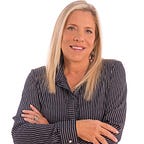Is It Time To Ditch Last-Century Career Paths?
In case you missed the memo, March is Women’s History Month. A special month to pay special tribute to, you know, that pesky special interest group known as women. We’re those people who get cameo roles at best in “real history.” It’s a bitter irony that right at the beginning of this month, two of the best qualified, most accomplished, and best prepared candidates in the U.S. presidential race had to suspend their campaigns. Amy Klobuchar and Elizabeth Warren are both high-achieving woman who never pandered to the “hot mess” stereotype. I’ll leave it to you to surmise whether their fortunes would have been different had they the foresight to be born with a foreskin.
It’s special dates like Women’s Whatever that make it painfully apparent that for the rest of the time, men are the norm, the regular version of people. Like the song says, “It’s a Man’s Man’s Man’s World.” We’re sometimes so accustomed to that reality that we don’t recognize the extent to which the world has been designed by men, for men.
By this point, most of us are aware that pharmaceutical development and drug trials tend to consider males the default human. Women? We’re a variation from the patient norm. Pesky, pesky, pesky. We know, too, that car safety tests assume the average occupant is an adult male, which means cars are less safe if you’re one of the deviant 50 percent of the adult population who’s not a man. What I didn’t know until recently is cities, too, are designed for men, not taking into account, for instance, women’s tendency to walk more and use public transportation more often than men. Even the meticulous planners of NASA somehow overlooked the fact that the first two-woman spacewalk would require two woman-sized space suits.
Once you start thinking about design skewed toward men, you begin to see it everywhere. As far as I’m concerned, the upper level of cabinet shelves in my kitchen is just for show. And my stacked washer-dryer? I need a step stool to ensure clothes dry properly (love the wrinkle-free option in this new dryer).
The problem extends beyond physical fit. Think about how our career paths have been designed. Does anyone really think they take women’s needs into account?
Virtually all career paths are mapped out across a simple linear progression that has fit men well over the decades: A new employee joins a business in his 20s, steadily rises through the ranks, maybe cycling through several roles, and accrues seniority and additional compensation along the way. Companies have placed a particular focus on developing employees in their 30s, when they’re no longer green but still have plenty of youthful drive. Women have had to figure out how to contort themselves into this career template. If they want to have a family, they have had to work twice as hard (day job plus child-rearing), take a career break and miss out on progression, or switch into a more accommodating line of work. Yes, some men are family-first, too, but they get a different oddball status rating and are still very much in the minority.
Here’s a crazy thought: With women now a growing force within the labor market, why don’t we rethink our approach to career trajectories? There are plenty of talented women who missed out on their supposedly make-or-break early 40s. Smart organizations are beginning to recognize that it’s not only 30-somethings who have a lot of potential, but also 50-somethings. This is an age at which kids likely have flown the nest or at least are old enough to look after themselves. For many mothers who work outside the home, it’s an age of liberation, a time of increasing freedom.
In my career, I’ve seen a lot of men in their 50s — though by no means all — ease off the pedal after scurrying their way up the career slope nonstop since their 20s. Companies with limited space at the top are happy to offer early retirement options for employees (mostly men) who have gone as high as they can and see no point in taking a “sideways promotion.” In contrast, women (and some men) who took their foot off the pedal in their 30s to raise children are getting back into their careers in their 40s and hitting their strides in their 50s with renewed energy and ambition.
This may appear an unusual “comeback” career path, but as women become a majority of the educated workforce, I predict it will become an alternative norm. After all, the career path we know wasn’t explicitly designed for men; it simply evolved as a one-size-fits-all template that roughly fit the organizational needs, employee lifestyles, and social norms of the 20th century, when men were the default. With the benefit of hindsight and greater insight, we’re in good shape to design custom career paths for the 21st century, paths that fit all people with careers — male people and those other people, too.
As for that top job in the United States, I’m hopeful — but nearly five years is a long time to hold my breath. In fact, I’ve sort of been holding my breath since 1984, when I genuinely believed a wonderful woman from Queens, New York — a working mom by the name of Geraldine Ferraro — could have been, should have been a heartbeat away from that office, despite or maybe because she’d managed her career to include motherhood and a short slowdown to jumpstart her family before she sped right up into the U.S. Congress from the District Attorney’s Office.
New century, same tired story.
